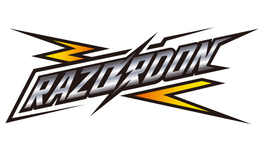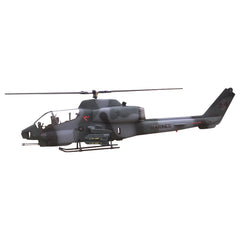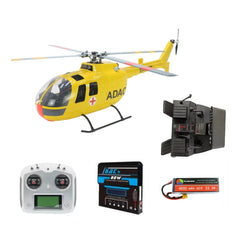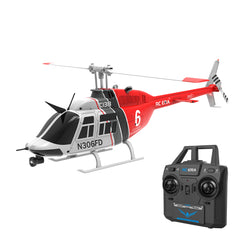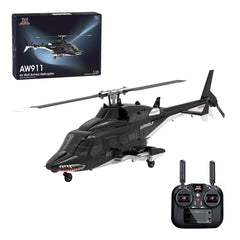Introduction – Why This Comparison Matters

Quick Overview – Mini vs Giant at a Glance
| Feature | Mini RC Helicopters | Giant Model Helicopters |
| Size & Weight | Rotor ≤ 200 mm; 50g–200g | Rotor ≥ 450 mm; 1–5 kg+ |
| Typical Use Cases | Indoor flying, beginner training, kids & casual | Outdoor aerobatics, pro 3D flying, aerial work |
| Flight Time | 5–10 minutes | 10–20+ minutes |
| Price Range | $80–$200 | $500–$3,000+ |
| Skill Level | Beginner-friendly | Advanced or professional pilots |
| Wind Resistance | Low – best in calm indoor/outdoor conditions | High – stable in moderate to strong winds |
| Maintenance | Simple repairs, cheap parts | Complex tuning, costly parts |
| Payload Capacity | Very limited | Can carry cameras or heavy accessories |
- Size & Weight: Smaller, lighter models are easier to store and transport, but large models offer better stability in windy conditions.
- Flight Time: Battery capacity is the main factor; giants often have bigger batteries, enabling longer sessions.
- Wind Resistance: Minis are affected by even mild gusts, while giants handle outdoor conditions much better.
- Payload: For aerial photography or carrying specialized gear, only giants have the lifting power you need.

Pros & Cons – Which Fits Your Needs Better?
| Mini RC Helicopters | Giant Model Helicopters | |
| Pros | - Compact & portable - Affordable purchase & maintenance - Beginner-friendly controls - Safe for indoor use |
- Excellent outdoor stability - Long flight duration - High payload capacity - Capable of advanced aerobatics |
| Cons | - Weak in windy conditions - Shorter flight times - Low payload capacity |
- High purchase & repair cost - Requires more space to operate - Steeper learning curve |
Why Choose Mini RC Helicopters?
Why Choose Giant Model Helicopters?
Buying Guide – How to Choose Between Mini and Giant RC Helicopters
-
Assess Your Skill Level
-
Match to Your Flying Environment
- Small or Mini RC helicopter: Works best indoors or in small outdoor areas with calm weather.
- Giant RC helicopter: Requires open fields, parks, or dedicated flying zones.
-
Set Your Budget
- Mini:$80–$200 for quality hobby-grade models.
- Giant: $500–$3,000+ for advanced builds.
Remember to factor in maintenance and spare parts—giants can cost significantly more over time.-
Consider Flight Features
For beginners, stability features such as auto-hover, one-key takeoff/landing, and basic gyroscopic control can make learning far easier. However, GPS technology is worth considering. GPS-enabled models (eg, WOLFBUSH AW-911 Airwolf)can automatically correct drift, hold position in light wind, and offer return-to-home safety functions—benefits that appeal to both new and experienced pilots.

-
Evaluate Maintenance Requirements
Common Mistakes to Avoid When Choosing
-
Overestimating Your Skill Level
Jumping straight to a giant model without prior experience can lead to costly crashes and frustration. -
Ignoring Space Requirements
A giant helicopter in a small backyard is both unsafe and impractical. -
Underestimating Maintenance Costs
Large helicopters can have repair bills that exceed the purchase price of a mini. -
Choosing Based on Looks Alone
A scale replica might look amazing, but it needs to match your flying skills and environment. -
Skipping Research on Parts Availability
Some models—especially giant ones—have limited spare part supply, which can ground your helicopter for weeks.
Conclusion – Making Your Choice with Confidence
Quick Recommendation
| Choose Mini RC Helicopter If… | Choose Giant Model Helicopter If… |
| ✅ You’re a beginner or buying for kids | ✅ You’re an advanced or professional pilot |
| ✅ You want a low-cost, low-maintenance model | ✅ You’re ready for a high-investment hobby |
| ✅ You’ll fly mostly indoors or in small spaces | ✅ You have access to large outdoor flying areas |
| ✅ You value portability and easy storage | ✅ You need maximum stability, payload, and performance |
Final Advice
- If you’re starting your journey, a mini RC helicopter offers the perfect balance of affordability, safety, and fun.
- If you’re seeking high-level performance, stability, and advanced capabilities, a giant model helicopter is a worthy investment.
